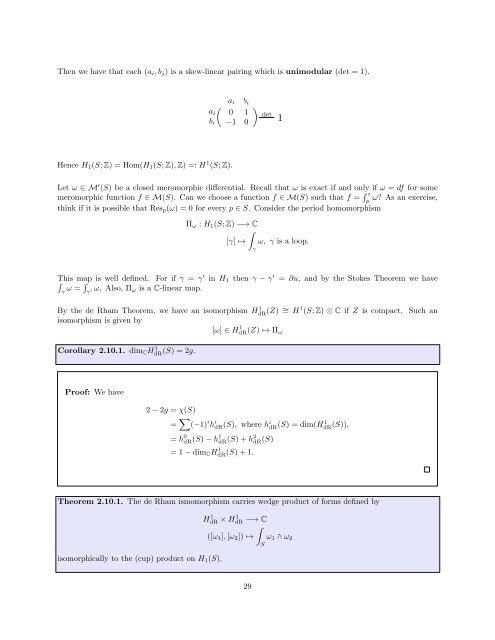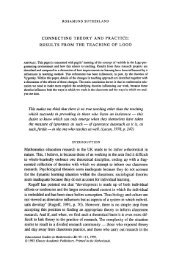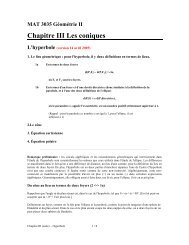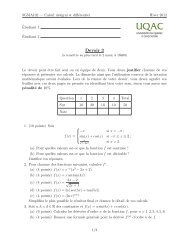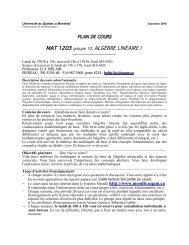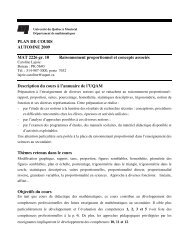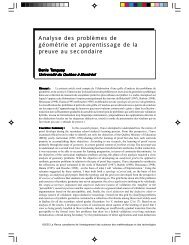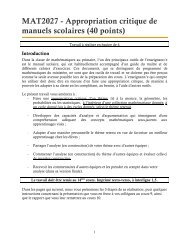COMPLEX GEOMETRY Course notes
COMPLEX GEOMETRY Course notes
COMPLEX GEOMETRY Course notes
You also want an ePaper? Increase the reach of your titles
YUMPU automatically turns print PDFs into web optimized ePapers that Google loves.
Then we have that each (a i , b j ) is a skew-linear pairing which is unimodular (det = 1).<br />
a i<br />
b i<br />
<br />
a i 0 1<br />
b i −1 0<br />
<br />
det<br />
1<br />
Hence H 1 (S; Z) = Hom(H 1 (S; Z), Z) =: H 1 (S; Z).<br />
Let ω ∈ M ′ (S) be a closed meromorphic differential. Recall that ω is exact if and only if ω = df for some<br />
meromorphic function f ∈ M(S). Can we choose a function f ∈ M(S) such that f = ∫ z<br />
ω? As an exercise,<br />
p<br />
think if it is possible that Res p (ω) = 0 for every p ∈ S. Consider the period homomorphism<br />
Π ω : H 1 (S; Z) −→ C<br />
∫<br />
[γ] ↦→ ω, γ is a loop.<br />
γ<br />
This map is well defined. For if γ = γ ′ in H 1 then γ − γ ′ = ∂u, and by the Stokes Theorem we have<br />
∫<br />
γ ω = ∫ γ ′ ω. Also, Π ω is a C-linear map.<br />
By the de Rham Theorem, we have an isomorphism HdR 1 (Z) ∼ = H 1 (S; Z) ⊗ C if Z is compact.<br />
isomorphism is given by<br />
[ω] ∈ HdR(Z) 1 ↦→ Π ω<br />
Such an<br />
Corollary 2.10.1. dim C HdR 1 (S) = 2g.<br />
Proof: We have<br />
2 − 2g = χ(S)<br />
= ∑ (−1) i h i dR(S), where h i dR (S) = dim(H1 dR (S)),<br />
= h 0 dR(S) − h 1 dR(S) + h 2 dR(S)<br />
= 1 − dim C HdR(S) 1 + 1.<br />
Theorem 2.10.1. The de Rham ismomorphism carries wedge product of forms defined by<br />
isomorphically to the (cup) product on H 1 (S).<br />
HdR 1 × HdR 1 −→ C<br />
∫<br />
([ω 1 ], [ω 2 ]) ↦→ ω 1 ∧ ω 2<br />
S<br />
29


